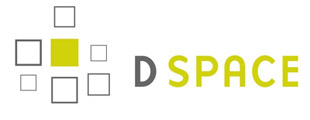Por favor, use este identificador para citar o enlazar este ítem:
http://hdl.handle.net/20.500.11765/9318
Comparison of observed and modeled cloud-free longwave downward radiation (2010–2016) at the high mountain BSRN Izaña station
| Título : | Comparison of observed and modeled cloud-free longwave downward radiation (2010–2016) at the high mountain BSRN Izaña station |
| Autor : | García Cabrera, Rosa Delia

 ; Barreto Velasco, África
; Barreto Velasco, África
















|
| Palabras clave : | Longwave downward radiation; Radiative transfer models; Baseline Surface Radiation Network |
| Fecha de publicación : | 2018 |
| Editor: | European Geosciences Union |
| Citación : | Geoscientific Model Development. 2018, 11(6), p. 2139–2152 |
| Versión del editor: | https://dx.doi.org/10.5194/gmd-11-2139-2018 |
| Resumen : | A 7-year (2010–2016) comparison study between measured and simulated longwave downward radiation (LDR) under cloud-free conditions was performed at the Izaña Atmospheric Observatory (IZO, Spain). This analysis encompasses a total of 2062 cases distributed approximately evenly between day and night. Results show an excellent agreement between Baseline Surface Radiation Network (BSRN) measurements and simulations with libRadtran V2.0.1 and MODerate resolution atmospheric TRANsmission model (MODTRAN) V6 radiative transfer models (RTMs). Mean bias (simulated - measured) of <1.1% and root mean square of the bias (RMS) of <1% are within the instrumental error (2 %). These results highlight the good agreement between the two RTMs, proving to be useful tools for the quality control of LDR observations and for detecting temporal drifts in field instruments. The standard deviations of the residuals, associated with the RTM input parameters uncertainties are rather small, 0.47 and 0.49% for libRadtran and MODTRAN, respectively, at daytime, and 0.49 to 0.51% at night-time. For precipitable water vapor (PWV)>10 mm, the observed night-time difference between models and measurements is +5Wm-2 indicating a scale change of the World Infrared Standard Group of Pyrgeometers (WISG), which serves as reference for atmospheric longwave radiation measurements. Preliminary results suggest a possible impact of dust aerosol on infrared radiation during daytime that might not be correctly parametrized by the models, resulting in a slight underestimation of the modeled LDR, of about -3Wm-2, for relatively high aerosol optical depth (AOD>0.20). |
| Patrocinador: | AERONET Sun photometers at Izaña have been calibrated within the AERONET Europe TNA, supported by the European Union’s Horizon 2020 research and innovation program under grant agreement no. 654109 (ACTRIS-2). This research has benefited from the result of the project INMENSE (funded by the Ministerio de Economía y Competividad from Spain, CGL2016-8068. |
| URI : | http://hdl.handle.net/20.500.11765/9318 |
| ISSN : | 1991-959X 1991-9603 |
| Colecciones: | Artículos científicos 2015-2018 |
Ficheros en este ítem:
| Fichero | Descripción | Tamaño | Formato | ||
|---|---|---|---|---|---|
| gmd-11-2139-2018.pdf | 4,37 MB | Adobe PDF |  Visualizar/Abrir |
Los ítems de Arcimis están protegidos por una Licencia Creative Commons, salvo que se indique lo contrario.





